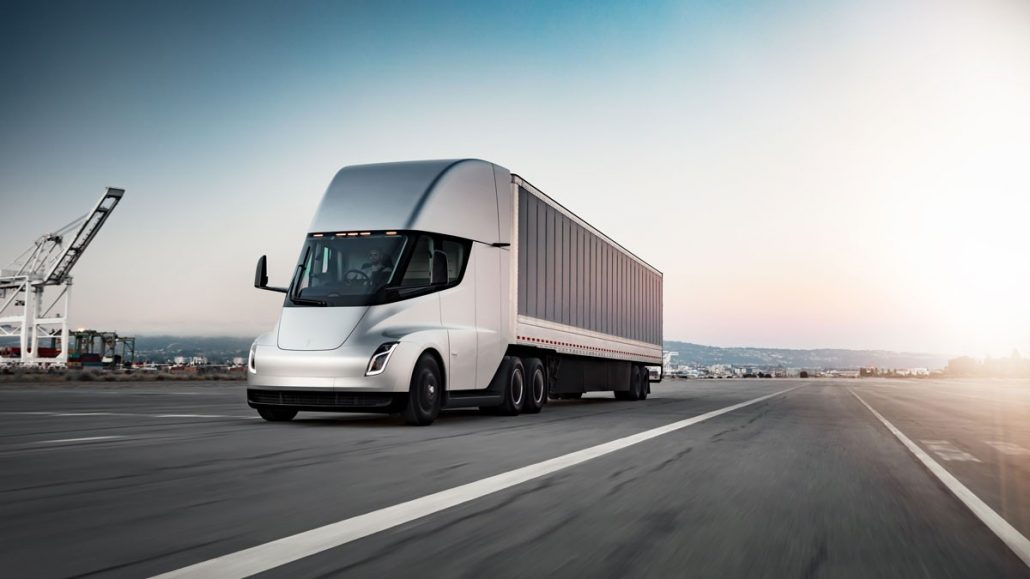
America. Where bigger is better.
From the geography to food portions and cars, size defines us. We’re one of the most obese nations on the planet and if that’s unhealthy for us personally, our obsession with powerful vehicles is unhealthy for the planet; diesel pickup trucks dominate the country’s best selling vehicles list, including the top three spots. And the number of these gas-guzzling monsters that we’re buying is going up.
Clearly, we’re still a way off from buying into the ‘culture of electrification’ that’s needed to drive (bad pun?) the US government’s commitment to reach net zero emissions by 2050. Yes, Tesla’s doing what it can, as are the Nissan Leafs and the Toyota Priuses of this world, while Polestar and other electric vehicle (EV) manufacturers are beginning to break into the market. But is it too little, too late, for the overall-wearing, star spangled banner-toting American who insists on having a V8 engine in their wagon? Certainly, adoption in that space – encouraging them to change and shift their behavior – is going to be incredibly difficult.
Almost paradoxically, an area that is emerging as the ‘next’ to undergo a radical transformation is long-haul trucking, aka Class 8 trucking. Britain is planning to ban the sale of new petrol and diesel trucks by 2040 – can the US follow suit?
With mandates, this could be an area that is overhauled (another bad ‘haul’ pun) faster, rather than trying to ‘convert’ an entire demographic. Indeed, the technology is underway. Tesla announced plans to unveil its ‘Semi’ – an all-electric, battery-powered, Class 8 semi-truck – as far back as 2016, with the likes of DHL, Sysco, Anheuser-Busch and PepsiCo placing orders almost five years ago. But, a 2021 SEC filing blamed ‘the limited availability of battery cells and global supply chain challenges’ for a delay in the launch of the Semi truck program to 2022, and DHL et al. are still waiting to take delivery of trucks that could reduce their fuel costs and fleet emissions.
Mercedes, Toyota and Volkswagen, among others, are also bringing innovation to the table, but the electrification of trucking remains largely in the R&D phases. There are a number of reasons for this, but the lack of talent at the top to accelerate (there we go again) the process is one we’re working on.
What are the roadblocks?
A major issue for the United States is simply the sheer scale of the country and its estimated four million miles of roads, including 47,432 miles of Interstate Highways. Whereas a heavy-duty truck equipped with two 150-gallon tanks of diesel can travel upwards of 1,500 miles, this is severely limited for their EV cousins; to around 400-500 miles.
And the energy requirements are staggering. The circa 300-350kwh needed to ‘fast-charge’ an EV car in 20-30 mins would take up to five hours to charge a battery of a Class 8. In some ways, though, it makes more sense to introduce EVs to the commercial market than it does to the ‘everyday driver’. The Department of Transportation’s ‘Hours of Service’ Regulations outline strict rest periods for commercial drivers to ensure their safety and that of other road users, keeping them rested and alert with enforced breaks.
These breaks would feasibly provide a window for battery charging, whether in depot or out on the road, but this becomes less and less feasible with multiple trucks charging simultaneously. Short of running nuclear power plants at every service station from the east to west coast, the power simply isn’t there.
Another issue lies in the infrastructure. The country’s first gas station was established over a century ago – in 1905, in Missouri – but 2050 is less than three decades away, so roll-out of charge points needs to be quick if we’re to meet those targets, with some substantial investment and manpower needed to deliver the best-case scenario.
Then there’s the supply chain. Even as we (for the foreseeable future) continue in our archaic, diesel-fueled ways, we’re feeling the pinch of supply chain issues. In fact, a shortage of microchips and other components has been the narrative since COVID-19. Sprinkle-added interruptions into the transportation aspect of the chain and there are increased issues to face in terms of getting stock from A to B and delivery times, and the resulting ramifications for businesses. Even if we fix our current supply chain issues, we could be opening ourselves up to new ones in the future.
What are we seeing that will fix the problem?
While the behemoths of Tesla, Mercedes and Volkswagen (even Apple and Google) make inroads (what is it with road puns today?) into this crucial area, Hyperion has recently placed the CTO of a startup that is focused on this technology. By sourcing these strategic heads and decision makers, we can champion a ‘top-down’ approach to directing the required change.
Meanwhile, Germany has been working on a system of electric cabling over its highways, similar to the cabling that runs over train or tram lines, with pantographs making connection with the wiring to allow trucks to charge whilst on the move. It’s estimated that installation over a third of Germany’s highway network would reduce trucking emissions by two-thirds. Huge investment is still required however, and distances remain an issue for this solution in the US, which is almost 30 times the size of Germany.
Where electric trucking could have the most impact in the short term is in ‘last-mile’ deliveries, the final leg of the supply chain that involves taking items from warehouses to shops – or even individuals in the case of online deliveries. These trucks tend to make shorter journeys and, while overhead cabling is unlikely to be a complete solution due to having to access remote parts of the country, the battery power needed for these journeys would be on a far smaller scale.
The key is education. We were reticent to adopt solar technology ten years ago but photovoltaic cells have now made into the mainstream. The ‘lightbulb moment’ came when attitudes shifted to focus on the long-term gain, and the same must happen for electric trucking to be accepted; not just commercially by the large corporations, but also by owner-operators who drive their own trucks. They make up about 11 per cent of the trucking demographic right now, which is a significant chunk of individuals who need to justify a move to electric for their next vehicle.
Much like a (diesel) Class 8 truck setting out with a full tank, there is a long way to go. But if the progression of EVs in the last decade is anything to go by (the Tesla Model S was released in 2012), then the next ten years promise to deliver incredible advancements in the space. The work has begun, the culture shift has started; from ‘last-mile’ to ‘long-haul’, the future of trucking is electric.


